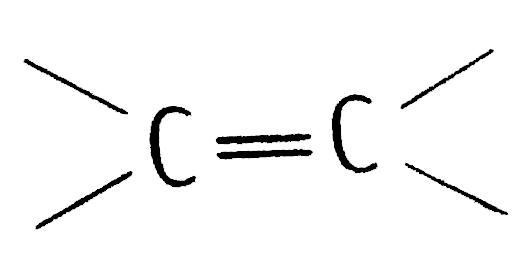The step in which NADH+H+ is not produced is : -
Succinyl-CoA → Succinate
Pyruvate → Acetyl-CoA
α - ketoglutarate → Succinyl - CoA
Malate → OAA
The correct Answer is:A
To solve the question regarding which step does not produce NADH + H⁺, we will analyze each option provided.
1. Identify the Options: The question provides four options, and we need to evaluate each one to determine if NADH + H⁺ is produced.
2. Evaluate Option 1: Succinyl CoA to Succinate:
- In this step, succinyl CoA is converted to succinate.
- During this conversion, GTP (which is equivalent to ATP) is produced, but NADH + H⁺ is not produced.
- Conclusion: This option does not produce NADH + H⁺.
3. Evaluate Option 2: Pyruvate to Acetyl CoA:
- Here, pyruvate is converted into acetyl CoA.
- This reaction involves the decarboxylation of pyruvate and results in the production of NADH + H⁺.
- Conclusion: This option produces NADH + H⁺.
4. Evaluate Option 3: Alpha-Ketoglutarate to Succinyl CoA:
- In this step, alpha-ketoglutarate is converted to succinyl CoA.
- This reaction also produces NADH + H⁺ as a byproduct.
- Conclusion: This option produces NADH + H⁺.
5. Evaluate Option 4: Malate to Oxaloacetate:
- In this conversion, malate is oxidized to oxaloacetate.
- This reaction results in the production of NADH + H⁺.
- Conclusion: This option produces NADH + H⁺.
6. Final Conclusion:
- Based on the evaluations, the only step that does not produce NADH + H⁺ is the conversion of succinyl CoA to succinate.
- Therefore, the correct answer is Option 1.
- In this step, succinyl CoA is converted to succinate.
- During this conversion, GTP (which is equivalent to ATP) is produced, but NADH + H⁺ is not produced.
- Conclusion: This option does not produce NADH + H⁺.
- Here, pyruvate is converted into acetyl CoA.
- This reaction involves the decarboxylation of pyruvate and results in the production of NADH + H⁺.
- Conclusion: This option produces NADH + H⁺.
- In this step, alpha-ketoglutarate is converted to succinyl CoA.
- This reaction also produces NADH + H⁺ as a byproduct.
- Conclusion: This option produces NADH + H⁺.
- In this conversion, malate is oxidized to oxaloacetate.
- This reaction results in the production of NADH + H⁺.
- Conclusion: This option produces NADH + H⁺.
- Based on the evaluations, the only step that does not produce NADH + H⁺ is the conversion of succinyl CoA to succinate.
- Therefore, the correct answer is Option 1.
Topper's Solved these Questions
- BOOK - MOTIONCHAPTER - RESPIRATION IN PLANTS EXERCISE - EXERCISE - 327videos
RESPIRATION IN PLANTS
- BOOK - MOTIONCHAPTER - RESPIRATION IN PLANTS EXERCISE - EXERCISE - 419videos
RESPIRATION IN PLANTS
- BOOK - MOTIONCHAPTER - RESPIRATION IN PLANTS EXERCISE - EXERCISE -180videos
RESPIRATION IN PLANTS
- BOOK - MOTIONCHAPTER - REPRODUCTIVE HEALTHEXERCISE - Exercise - 43videos
REPRODUCTIVE HEALTH
- BOOK - MOTIONCHAPTER - SENSORY ORGANSEXERCISE - EXERCISE - 321videos
SENSORY ORGANS
Similar Questions
Identify the wrong statements: br a. There are three steps in Krebs cycle whereNAD+ is reduced to NADH+H+ , br b. Krebs cycle starts with the condensation of acetyl group with fumaric acid to yield citric acid.br c. Cytochrome c is a small, mobile carrier protein, which transfers protons between complex III and IV.br d. In glycolysis, glucose undergoes partial d d. oxidation and at the end produces 2 molecules of pyruvic acid. .
View SolutionReducing power NADH+H+ is produced during conversion step of glycolysis.
View Solution
Knowledge Check
- Question 1 - Select One
NADH is produced in
APhotosystem IIBPhotosystem ICGlycolysisDBoth A and B - Question 2 - Select One
In the chlorination of alkanes, the first step in which chlorine free radicals are produced is called
AInitiationBActivationCPropagationDDeactivation - Question 3 - Select One
Respiratory cycle where NADH2 are produced is
ACalvin cycleBKreb's cycleCEMP pathwayDHMP shunt
In certain biochemical reactions two redox-equivalents are removed in the form of two hydrogen atoms from PGAL and transferred to a molecule of NAD+ and NADH + H+ is formed. This NADH + H+ is finally reoxidised in :-
View SolutionWhich of the following on reaction with H2S does not produce metallic sulphide ?
View SolutionThe number of NADH2 molecules produced in EMP is
View SolutionThe enzymes of Krebs cycle where NADH+H+ are produced are
View SolutionThe additions of HCl to an alkene proceeds in two steps. The first step is the attack of H+ ion to
 portion which can be shown as View Solution
portion which can be shown as View Solution

